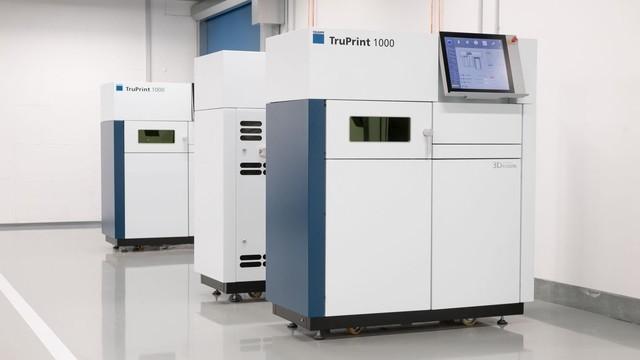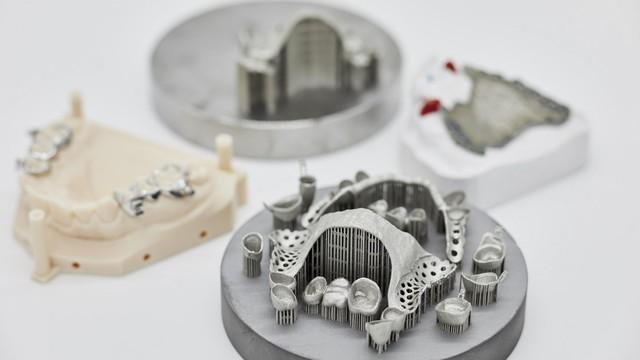Exploring the Fascinating World of Dental 3D Printing
In recent years, 3D printing has revolutionized various industries, and dentistry is no exception. The technology has opened up new avenues for dental professionals to enhance their practices, offering unparalleled precision, efficiency, and patient-centric solutions. One of the most intriguing applications of 3D printing in dentistry is the fabrication of dental prosthetics, including teeth. In this comprehensive article, we delve into the world of dental 3D printing, exploring the process, advancements, and factors that contribute to determining the time required for 3D printing a tooth.
1. The Advent of Dental 3D Printing
Traditional methods of crafting dental prosthetics, such as crowns, bridges, and dentures, were often labor-intensive and time-consuming. The advent of dental 3D printing has transformed this landscape, presenting dentists with a cutting-edge technology that streamlines the fabrication process and improves patient outcomes.
2. The Dental 3D Printing Process
The dental 3D printing process involves several crucial steps, each contributing to the final outcome of the fabricated tooth. The journey begins with the acquisition of accurate patient data, typically through digital intraoral scanners or CBCT scans. These high-resolution scans create a digital 3D model of the patient's oral cavity, serving as the foundation for the tooth's design.
3. Designing the Tooth
Designing the tooth is a critical stage that demands expertise and precision. Using specialized dental CAD (Computer-Aided Design) software, dental professionals meticulously design the tooth, ensuring that it fits seamlessly into the patient's unique oral anatomy. The software allows for adjustments based on the patient's occlusion, bite, and aesthetic preferences, all contributing to the overall success of the dental restoration.
4. Material Selection
Selecting the appropriate material for 3D printing the tooth is essential for achieving optimal functional and aesthetic results. Dental 3D printers can work with various materials, such as ceramics, resins, and even metal alloys. Each material has its unique properties, affecting factors like durability, esthetics, and biocompatibility. Dental experts consider the patient's specific needs and preferences, as well as the location of the tooth within the mouth, when choosing the material.
5. The 3D Printing Process Itself
The actual 3D printing process involves the additive layer-by-layer deposition of the chosen material. Dental 3D printers can employ different technologies, including SLA (Stereolithography), DLP (Digital Light Processing), and SLS (Selective Laser Sintering). Factors like layer thickness and printing speed influence the overall printing time.
6. Post-Processing and Finishing
Once the tooth is 3D printed, it undergoes post-processing to remove any support structures and excess material. Subsequently, dental technicians perform meticulous finishing touches, ensuring that the tooth's surface is smooth and matches the adjacent teeth in terms of shade and contour. This level of attention to detail is crucial for achieving a natural-looking dental restoration.
7. Quality Control and Testing
Ensuring the accuracy and precision of the 3D printed tooth is paramount. Dental laboratories conduct rigorous quality control and testing procedures to verify that the tooth meets the required standards. This stage might include assessments of the tooth's fit, occlusion, and overall aesthetics.
8. Time Considerations
The time required to 3D print a tooth can vary based on several factors. Complexity of the tooth design, the chosen 3D printing technology, material type, and the efficiency of the dental laboratory all contribute to the overall printing time. On average, the entire process can take anywhere from a few hours to several days.
9. Advancements and Future Prospects
As dental 3D printing technology continues to evolve, we can expect further advancements that will shorten the fabrication time while enhancing the quality of dental restorations. With ongoing research and development, dental professionals can anticipate even more patient-centric and cost-effective solutions in the future.
Conclusion
In conclusion, 3D printing has significantly impacted the field of dentistry, presenting a transformative solution for fabricating dental prosthetics, including teeth. From the initial digital scans to the final finishing touches, the dental 3D printing process is a meticulous journey that combines technology, expertise, and artistry. While the time required to 3D print a tooth depends on several factors, the benefits of precision, efficiency, and patient satisfaction make it a truly revolutionary advancement in modern dentistry. As technology continues to progress, dental professionals can look forward to an exciting future filled with innovative possibilities for enhancing oral healthcare.

faq: How does 3D printing technology work in dentistry?
3D printing technology in dentistry is a groundbreaking process that involves the additive manufacturing of dental prosthetics, including teeth. The process begins with the acquisition of precise patient data using digital intraoral scanners or CBCT scans. These scans create a digital 3D model of the patient's oral cavity, serving as the foundation for designing the tooth.
With the help of specialized dental CAD (Computer-Aided Design) software, dental professionals carefully design the tooth to fit seamlessly into the patient's unique oral anatomy. The software allows for adjustments based on the patient's occlusion, bite, and aesthetic preferences, ensuring a precise and personalized dental restoration.
Once the tooth's design is finalized, the appropriate material for 3D printing is selected. Dental 3D printers can work with a variety of materials, such as ceramics, resins, and metal alloys. The material choice is based on factors like durability, esthetics, and biocompatibility, all tailored to the patient's specific needs and the location of the tooth within the mouth.
The actual 3D printing process involves the additive layer-by-layer deposition of the chosen material. Different 3D printing technologies, such as SLA, DLP, and SLS, can be employed, each with its unique benefits and limitations. The layer thickness and printing speed influence the overall printing time.
Once the tooth is 3D printed, it undergoes post-processing to remove support structures and excess material. Dental technicians meticulously finish the tooth's surface, ensuring it is smooth and matches the adjacent teeth in terms of shade and contour.
To ensure the quality of the 3D printed tooth, dental laboratories conduct rigorous testing and quality control procedures. This stage might involve assessments of the tooth's fit, occlusion, and overall aesthetics to meet the required standards.
Overall, 3D printing technology in dentistry combines advanced digital processes, expertise in dental design, and precision manufacturing techniques to provide patients with highly personalized and natural-looking dental restorations.
faq: What are the factors that influence the time it takes to 3D print a tooth?
The time required to 3D print a tooth can be influenced by several key factors:
- Tooth Complexity: The complexity of the tooth design plays a significant role in determining the printing time. Intricate designs with detailed features may take longer to print compared to simpler tooth restorations.
- Chosen 3D Printing Technology: Different 3D printing technologies have varying printing speeds and capabilities. SLA (Stereolithography) and DLP (Digital Light Processing) printers are generally faster than SLS (Selective Laser Sintering) printers. The technology chosen for the specific case can impact the overall printing time.
- Material Type: The type of material used for 3D printing the tooth affects the printing time. Some materials may require additional printing passes or post-processing steps, which can extend the fabrication time.
- Layer Thickness: The layer thickness selected for the printing process can influence the time it takes to build the tooth. Thicker layers may reduce printing time but could result in a slightly less detailed final product.
- Printing Speed: The printing speed chosen for the 3D printer can impact the overall time. Higher printing speeds can expedite the process but may require additional adjustments to maintain the desired quality.
- Efficiency of the Dental Laboratory: The expertise and efficiency of the dental laboratory carrying out the 3D printing process play a role in determining the overall turnaround time. Experienced and well-equipped labs may be able to complete the process more quickly.
- Post-Processing Requirements: Post-processing steps, such as support removal and finishing, add to the overall fabrication time. Careful and meticulous post-processing ensures the final restoration meets the required standards.
- Quality Control and Testing: Rigorous quality control and testing procedures may extend the overall time. However, these steps are crucial to ensuring the accuracy, fit, and functionality of the 3D printed tooth.
While the time required for 3D printing a tooth can vary based on these factors, it is essential to prioritize precision and quality to deliver the best possible dental restoration for the patient. The benefits of using 3D printing technology in dentistry, including improved patient outcomes and streamlined processes, make it a valuable addition to modern dental practices.




